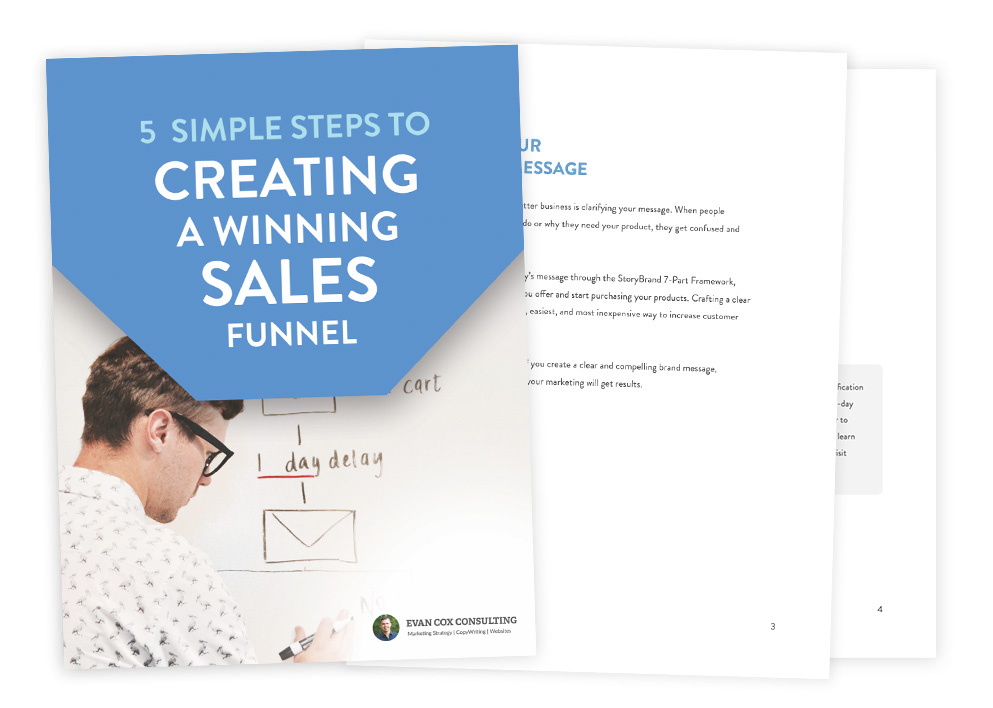Breaking down an effective lead generator strategy
If you’re familiar with StoryBrand or inbound marketing, you’ve likely heard of a lead generator (also known as a lead magnet or transitional offer) before. Many small business owners and nonprofit executive directors fall into the “build it and they will come” trap with their lead generator.
The reality is having a nicely designed lead generator doesn’t guarantee people will download it. Moreover, downloading it doesn’t guarantee they’ll become customers or clients either.
Here’s a quick breakdown of how to build an effective strategy for your lead generator.
First: Identify the best topic to cover
What questions are readers/the ideal audience clamoring to have answered?
Use forums, customer interviews, testimonials, and subject matter experts to confirm the questions most often asked during the sales stage before they take action.
What problem do readers ascribe the highest value to?
Don’t just solve any problem they have. Use this content piece to address the problem they would give just about anything to resolve. Put aside any concerns about giving away too much information. Those who download the lead generator will know you as the expert in your field and come to you when they’re ready for help.
What stage in the customer journey is your ideal audience in?
There are multiple ways to break down the customer journey, but the simplest is to break it down into 3 categories—awareness, consideration, and decision.
- Awareness – The buyer is aware of a problem.
- Consideration – The buyer defines their problem and considers options to solve it.
- Decision – The buyer evaluates and decides on the right provider to administer the solution.
Choose a topic that will help them move from one category to another.
For example: Homeowners with an aging roof that begins leaking may be asking “do I need to repair or replace my roof?” The stakes are high because water damage is costly. This leaves them farther down the customer journey either looking for options or finding the right roofer to fix the problem. Choosing a topic that pertains to these questions and concerns will meet the homeowner where there at in their journey.
Second: Select the appropriate style of lead generator
After you’ve landed on the right topic, it’s then important to consider what format will offer the most value to the reader. Here are a few of the many options to choose from:
- Short Guide – An informative piece with typically 3-5 valuable points to educate, inspire, or convince the reader to take action
- Example: 3 Ways to ________, 5 Mistakes to Avoid with _______
- Exhaustive Guide – A more detailed piece that covers a topic in greater detail
- Example: The Ultimate Guide to ____, A Step By Step Guide to _______
- Checklist – A short, action-oriented list designed to distill information and enable the reader to easily execute
- Case Study – A story that walks readers through the challenge, solution, and result for a person or brand in similar circumstances
- Example: [Brand Name] Fuels [Company Name] for Growth….
- Infographic – A highly visual piece that tells a story in very few words.
- Template – A proven approach to solving a problem that gives the reader a framework and headstart to do it all on their own
- Quiz or Assessment – An interactive experience that provides custom results based on the reader’s criteria
- Discount – An easy lift for e-commerce brands or companies with products who can offer a reduced rate in exchange for their contact information
- Webinar – A live or recorded virtual event designed to deliver valuable insights to attendees
- Video Course – A series of videos delivered via email to the reader on a particular topic
- Planner or Worksheet – A practical guide designed to help them get organized
Homeowner example: It’s important to understand a little more at this stage about who the homeowner is. A checklist could work well for a reader looking to come prepared to a conversation with an insurance adjuster or roofing contractor. On the other hand, a case study might prove to be a powerful example for readers needing reassurance that the contractor has served a similar demographic or style of home as theirs.
Third: Create a killer title
You’ve identified the right topic. You’ve landed on the format and style. Now, it’s time to use the power of a clear message and compelling copy to create a killer title.
Remember these tips and tricks:
- Go back to the questions you’ve identified that customers are asking—and use them.
- Combine an interesting title with a complimentary sub-title.
- Example: Title: “5 Ways Meditation Can Transform Your Mindset”
- Example Subtitle: “A beginner’s guide to quieting your mind and re-balancing your body”
- Use your title to:
- Build intrigue
- Resonate with interests
- Affirm their problems
- Demonstrate authority
- Generate interest
- Provide a sneak peek
- Spark (appropriate) controversy
Bottom line: Don’t start with a title. Instead, identify the right topic, confirm the format that will serve readers best, and then hone your title.
Homeowner example: Here are some potential titles we could use for our homeowner example: 9 Questions your Roofer Should be Able to Answer; A Quiz: Can your new roof be covered by your home insurance?
How to use your lead generator
Creating a lead generator is only one element of an effective sales funnel. Plus, having a lead generator doesn’t automatically drive engagement. Consider these best practices for getting the most out of your lead generator.
- Include a section highlighting your lead generator that lives prominently on your website homepage
- Insert an opt-in for your lead generator at the end of relevant blog posts
- Include a pop-up on your website offering your lead generator to visitors
- Build a unique landing page to highlight and promote your lead generator
- Make your lead generator the “default freebie” when hopping on a podcast, at speaking events, or in other settings with a new audience
- Post your lead generator on social media channels you frequent
- Ask partners, industry affiliates, and key influencers to share your lead generator with adjacent audiences that could benefit from the content
- Run paid ads (social media or Google) to your unique lead generator landing page
*If you engage in paid tactics, be sure your lead generator is dialed in first so that no precious ad money is accidentally wasted.
Additional resources to create an effective lead generator
Here are some of our favorite go-to resources for diving deeper into the world of lead generators.
Hubspot: Lead Generation: A Beginner’s Guide
Amy Porterfield: The Ultimate Guide to Choosing the Right Lead Magnet for Your Audience
Amy Porterfield: How to Troubleshoot a Lead Magnet That’s Not Working
Marketing Made Simple: Why You Need a Lead Generator & How to Build One
Curious to see what kind of lead generators we’ve created? Check them all out on our resources page.


